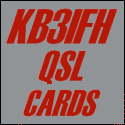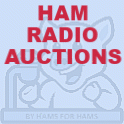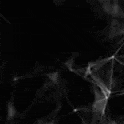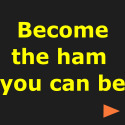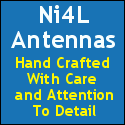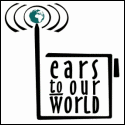 No RCV Port? No Problem – DXE RTR-1A
No RCV Port? No Problem – DXE RTR-1A
The Sweetness of Noise Free Copy
How you can use a receive antenna on a radio without a RCV port but with an outboard SDR?
The receiver needs protection
Switching from SDRUno to HDSDR
Anyway, let's get to the point
The DX-Engineering RTR-1A
The two RX ANT IN ports are in parallel
Connecting the RTR
Connections on the RTR-1A switch
- The main TX antenna goes to the connector helpfully labeled MAIN ANT IN. It's a PL259 to help insure that you are connecting a real antenna there, especially if you are trying to connect things in the blind (not advisable).
- The Receive Only antenna goes to either of the RX ANT IN ports. One is a female F-Type connector commonly used for TV / cable coax. That is the one I am using with the coax coming in from the LoG antenna. Additionally I have a quick disconnect F-Type on the end of the coax so I can pull it free when I'm not at the station.
- I run a cable from the MAIN ANT OUT port to my SDR, in-line with a passive diode based front-end protector. The switch is supposed to offer protection for the SDR on disconnect, but I'm paranoid. That ends up being a RCA male to male phono cable to the front-end protector, which outputs to a male to BNC female adapter, which connects to a male BNC to male sma cable to the SDR (whew!)
- The next port connects the switch to your transceiver and is helpfully labeled RADIO. Connect the ANT port on your transceiver to this connector using a male to male PL259. Since it is also PL259 that helps you avoid connecting non-radiating bits to radiating bits.
- The last connection is labeled TRANSMIT GROUND. This connection is what tells the switch to switch from RX ant to TX antenna. It uses a RCA plug style connector to ground the center pin to shield when the radio goes into transmit. It can ONLY work with a connector that goes to ground, no positive voltage keying. My Ten-Tec Eagle had a TX GND RCA female connector built right into the back of the radio but as I mentioned above you will need to take the appropriate wires from the SCU-28 port on the Yaesu FT-DX10 (pin 2 to ground) for which I built a break out box from the SCU-28 with the appropriate connectors.
- Lastly the switch needs 12v DC power to operate. You could take that from the radio's SCU-28 cable or from an external supply assuming you have a common DC ground. If the switch is not powered it defaults connecting the MAIN ANT IN port to the RADIO port and grounds the RX ANT IN and MAIN ANT OUT ports, thus saving your SDR. If the switch is unpowered nothing goes out the MAIN ANT OUT port so my SDR sees nothing.
All this so that we can participate in a hobby that communicates wirelessly
.png) |
| Connections |
In operation
 |
| Noise free reception |
Richard Carpenter, AA4OO, is a regular contributor to AmateurRadio.com and writes from North Carolina, USA. Contact him at aa4oo@hamradioqrp.com.
 Amateur Radio Weekly – Issue 402
Amateur Radio Weekly – Issue 402
RM Noise: AI noise filtering
Live filtering of voice and CW.
RM Noise
Run HamClock on your AllStarLink node
There is a script written to do this and it is easy to use.
EtherHam
POTA operators need to be more respectful
Interactions can be downright stressful, especially during the later hours of the day when a lone operator can look “suspicious” to someone who doesn’t understand Amateur Radio.
VE3IPS
W6RGC/AI: AI amateur radio operator and voice assistant
Natural language APRS capabilities allowing operators to send and receive APRS messages using conversational voice commands.
W6RGC
What QRP has taught me about slowing down
One of the things I love most about QRP is how naturally it encourages me to slow down and be present in the moment.
QRPer
Amateur Radio Television live streams
View live feeds of Amateur Radio Television transmissions.
BATV
UberSDR
A powerful, web-based SDR platform powered by ka9q-radio.
UberSDR
52 week Ham Radio Challenge wrap-up
What a journey it’s been!
Ian Renton
North Pole connection: Families speak to Santa through Ham Radio
Ham Radio operators have coordinated the holiday tradition through Santa Net for 20 years.
WVIA
Video
Replacing the IC-705 USB port with USB-C
Close-up shots of each step, what to watch out for, and tips to avoid common mistakes during installation.
KM4ACK
Improving receive performance on 80 Meters
Is a dipole or a loop better?
Ask Dave!
Get Amateur Radio Weekly in your inbox.
Sign-up here
Amateur Radio Weekly is curated by Cale Mooth K4HCK. Sign up free to receive ham radio's most relevant news, projects, technology and events by e-mail each week at http://www.hamweekly.com.
 The rear view mirror and then looking ahead
The rear view mirror and then looking ahead
Looking back on 2025, my total contacts were down fewer than in the past two years. As always, they were 100% CW, and my DXCC count for the year was the lowest since 2022 at 91 (2022 had 90).
Challenges Faced
Limited time in the radio chair played a big role, as 2025 filled up with home renovations: replacing all wood flooring except the bedrooms (that's 2026's summer project), a complete bathroom redo, and new kitchen cupboards. I enjoy my weekly CWTs and MSTs, but missed 41 due to renovations; high winds and freezing rain forced me to skip three major contests while taking down my Hustler 4-BTV antenna. Purchases were minimal—a Raspberry Pi4B, the Icom RC-28, and some dabbling in Python scripting.
Looking to 2026
I'm saving money now for a spring purchase: the Butternut HF6V antenna, which adds 80m to my contesting and stands up to our windstorms (rated to 80 mph), so no more take-downs. Large home projects remain, but I'll mix in more radio by better managing mornings—I'm up early and after radio blogs are read I often waste time online reading the news; instead, I'll fit in code practice and pileup work instead of surfing the days news. Python scripting continues too, with cool programs already running—more on that in 2026.
Final Thoughts
I get a kick out of rereading past New Year's posts, comparing plans to reality. As a good friend used to say, "Mikey dreams for free." Here's to at least some 2026 dreams coming true.
Mike Weir, VE9KK, is a regular contributor to AmateurRadio.com and writes from New Brunswick, Canada. Contact him at ve9kk@hotmail.com.
 The Communicator: January – February 2026
The Communicator: January – February 2026
The Communicator First Issue of 2026
Happy New Year! This first issue of 2026 spans 110 pages and offers a comprehensive exploration of amateur radio. Readers will find a diverse mix of content, including technical projects, the latest operating news, and engaging historical perspectives relevant to the amateur radio community.
Historical and Informative Features
Readers will find historical profiles of
notable figures in radio, this time including Edouard Branly, inventor of the
coherer, and the fateful and communications-stricken flight of Amelia Earhart. The Silent Revolution: The future of RF is in light, is an overview of transceivers using light rather than wires, promising less noise and terrific bandwidth. You will find tutorials on a variety of relevant subjects including HF digital
modes such as FT8 and JS8Call, suggestions for contest logging software, and
tips for successful portable operations.
Technical Articles
Several articles in this issue delve into
practical projects and technical experimentation. Topics covered include encrypted
communications in amateur radio, antenna construction and tuning, including the
revolutionary Challenger+, low-power (QRP) operating strategies, free access to
online software-defined radio receivers, and modifications to homebrew
equipment. Additional articles address emergency communications preparedness,
recent regulatory changes affecting Canadian amateurs, and reviews of new ham
radio products and books.
Regular Sections
The issue includes our regular informative columnists,
providing valuable information for operators.
They include feature propagation forecasts, updates on satellite and
digital modes, reports on VHF/UHF activity, summaries of recent contests and
on-air events, and even a ‘snow muffin’ recipe for Winter Field Day.
Feature Article: Embracing Versatility in Amateur Radio
An opinion piece reflected by the cover:
“Are you an Amateur Radio chameleon?” (p. 102), employs the chameleon as a
metaphor for versatility in the hobby. Drawing on the Senegalese proverb, “The
chameleon changes colour to match the earth, the earth doesn’t change colour to
match the chameleon,” the article gently critiques operators who specialize
exclusively in one aspect of amateur radio—whether chasing DX on HF, focusing
on VHF repeaters, contesting year-round, or limiting activity to digital modes
like FT8.
While acknowledging that specialization can
foster deep expertise, the article contends that remaining in a single niche
may restrict personal growth and diminish the enjoyment of amateur radio.
Instead, it celebrates those who adapt fluidly, moving between CW, SSB, digital
modes, satellite work, QRP portable activations, microwave experimentation,
public service events, and homebrewing. These “chameleons,” the article
suggests, find greater fulfillment and contribute more broadly to the amateur
radio community.
It concludes with an invitation for readers to share their own stories of adaptation and discovery by emailing communicator@ve7sar.net.
Download smaller low resolution
Please note that there are active links for additional content when viewed on-line.
On behalf of SARC and SEPAR, we wish all of you a happy, healthy and prosperous new year.
~ John VE7TI, Editor
Contents for this issue:
- Edouard Eugène Désiré Branly and his Coherer 4
- Amelia Earhart: Better radio skills may have made a difference 32
- Photonics the Silent Revolution: The future of RF is in light 38
- Ham Rocket Men 42
- The story of Salmon, Idaho 44
- Profile: The Canadian International DX Club 48
- The Challenger+ OCF: A portable Halfwave Antenna by KJ6ER 50
- About that Un-un 57
- Coaxial Cables and Common Mode Currents 58
- A Challenger+ build 61
- 2025 Appointment to the Canadian Amateur Radio Hall of Fame: Geoff Smith VA3GS (SK) 62
- A Starter Guide: Internet Remote Software Defined Radio (SDR) Receivers 64
- The BC QSO Party 66
- Ham Radio Outside the Box: What really determines the efficiency of an antenna? 68
- The VA7ZEB Line of Sight (LoS) Web App 71
- Converting the shack computer to Linux 74
- Foundations of Amateur Radio: I have a problem with logging 76
- Back to Basics: Near Vertical Incident Skywave 79
- Amateur Radio HH as a modular option of a new electric car 82
- No-ham Recipes: Winter Field Day Snow Muffins 83
- Profiles of SARC members: Blake R. Wiggs VA7BWG 86
- 2025 SARC Field Day Results 92
- SARC General Meeting minutes 94
- The Christmas Social 96
- Coming up 98
- The SEPAR Report 100
- Are you an Amateur Radio Chameleon? Embrace the multiverse of the ‘Hobby of Hobbies’ 102
- Ham Leftovers 106
- A look back: at The Communicator—January 2016 108
- Kudos 112
 The New Year’s Ham Baby
The New Year’s Ham Baby
Midnight struck! The calendar flipped,
A brand-new baby boy born fully equipped.
But this was no ordinary, cooing tyke,
He burst out screaming... "CQ! Q-R-Z! gimme a mic!"
His parents, both veteran 2-letter hams,
were thrilled—not only by baby, but the accurate count on his radiograms.
His first sound was: "dah dit dah dit, dah dah dit dah", a properly spaced CQ,
A perfect fist, spectacular for a ham just so new.
Mr. Jones, the neighbor wasn't as happy.
Just what I need, another ham next door like his mama and pappy.
They named him "Kenwood", a name everyone knew,
but in phonetics, baby confused quite a few.
They bypassed the rattle, the blanket, and ball,
‘cause he only wanted a transceiver with a nice waterfall.
He skipped "goo-goo" for Q-codes instead:
"My QTH is my bedroom!" is what he often said.
And change me often when I get wet…
I don’t want to risk the high voltage when I’m on a QSO in bed.
One day, they found him, in a corner on the floor,
He'd built a QRP rig they couldn’t ignore.
He keyed up on twenty, it was truly a feat,
Sending: "Happy New Year!!" it sounded so sweet.
The FCC called, "Is that your harmonic on the air?"
His dad just laughed, "No, sir, that’s my son you hear there.
"He's only seven weeks old, and his signal's 5-9-9"
The New Year's Ham Baby? He’s doing just fine!
~ The Communicator ~
 Licensed Amateurs by State
Licensed Amateurs by State
How Extra is Your State?
Show me the data
But in this bold new age of "I don't need to know nothin because I have an AI assistant"
SELECTe.state,-- Total count of all active licenses in the stateCOUNT(*) AS total_licenses,-- Count of Extra Class specificallySUM(CASE WHEN a.class = 'E' THEN 1 ELSE 0 END) AS extra_class_count,-- Percentage of the state's total that is Extra ClassROUND(SUM(CASE WHEN a.class = 'E' THEN 1 ELSE 0 END) * 100.0 / COUNT(*), 2) AS state_extra_percentage,-- Distribution of other classes (optional context)SUM(CASE WHEN a.class = 'G' THEN 1 ELSE 0 END) AS general_count,SUM(CASE WHEN a.class = 'T' THEN 1 ELSE 0 END) AS technician_countFROM fcc_amateur.am AS aJOIN fcc_amateur.en AS e ON a.fccid = e.fccidINNER JOIN (-- Get the single highest fccid (most recent) for every callsignSELECT MAX(fccid) AS latest_fccidFROM fcc_amateur.hdWHERE status = 'A'GROUP BY callsign) AS latest ON a.fccid = latest.latest_fccidWHERE e.state IS NOT NULL AND e.state != ''GROUP BY e.stateORDER BY extra_class_count DESC;
Results
Conclusion
Play around with the table and let me know in a comment if you find anything surprising or interesting.
Richard Carpenter, AA4OO, is a regular contributor to AmateurRadio.com and writes from North Carolina, USA. Contact him at aa4oo@hamradioqrp.com.
 ICQPodcast Episode 473 – Is AI About to Kill Ham Radio?
ICQPodcast Episode 473 – Is AI About to Kill Ham Radio?
In this episode, we join Martin Butler M1MRB, Dan Romanchik KB6NU, Caryn Eve Murray KD2GUT, Edmund Spicer M0MNG, and Ed Durrant DD5LP to discuss the latest Amateur / Ham Radio news. Colin Butler (M6BOY) rounds up the news in brief, and the episode's feature is, Is AI about to kill Ham Radio?
We would like to thank Richard French (M7GET) and our monthly and annual subscription donors for keeping the podcast advert free. To donate, please visit - http://www.icqpodcast.com/donate
Up to $25,000 at Stake in New ARRL Student Coding Competition
Jim Shaffer, KE5AL, Advocate For Blind Hams Becomes SK At 72
Colin Butler, M6BOY, is the host of the ICQ Podcast, a weekly radio show about Amateur Radio. Contact him at info@icqpodcast.com.












